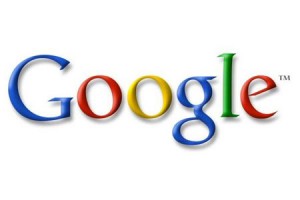I recently read an article that talked about how the iPad is being used in up-scale restaurants. Would it be surprising to learn that the iPad is being used as an electronic wine list?! This prompted me to evaluate the overall practicality of the iPad itself.
Understandably so, whenever a new “tech” device arrives on the scene, one of the first things that happens is people ask if it’s worth the retail price. Well, I’ve owned an iPad for almost two months now and I can say I’ve gotten my practical uses out of it for sure.
In the Workplace
You can kiss writing notes on paper goodbye! The iPad is the perfect complement for all your work meetings. There are plenty of note-taking apps available for the iPad, but the one I liked the most is Penultimate. This app allows you to create virtual notebooks, in which you can have an unlimited amount of pages of notes. The best part about it is that you can write all your notes with just your finger or you can get a fancy stylus that works with the iPad (and iPhone/iPod Touch).
I also use it while I walk around troubleshooting problems for my co-workers. I use it to take more notes or to enter things into my calendar on the fly. Everyone at my job now wants an iPad because it replaces Post-It notes (to an extant) as well as paper notepads and pens.
At Home
What’s the difference between work and home these days? For me, there is no difference, but it’s nice to be able to kick back and relax while playing a few games to hold you over until dinner. My favorite started out as FlightCTRL HD because that the first game I demoed on the iPad when I went to the Apple store to see one for the first time. It’s a super fun game that becomes really addicting really fast. My newest favorite is Texas Poker because it’s free and because it has online multiplayer capabilities.
Beyond games, the iPad serves many purposes at home, some of which are:
- A lightweight replacement for your laptop
- Video/movie/tv show player
- Portable radio (Internet music and radio stations)
- Kitchen aid for pulling up recipes
- Alarm clock
- Ebook reader
Speaking of ebook readers, all you Amazon Kindle owners can look no further for your next device upgrade. Yes, there’s a Kindle app for the iPad that allows you to open and read all of your already purchased Kindle books–and in full color!
On the go
If you’re actually moving while using the iPad, hopefully you’re a passenger and not the driver and if you have the 3G version, you can do everything I said above while driving to your next destination. I’ve taken my iPad almost everywhere I go. I’ve used it in stores, at gas stations, at restaurants and riding around with friends.
I think the best part of the iPad is the ability to be more portable than having a laptop, but large enough to not be stuck on the tiny screen of a smartphone.
My gripes
The iPad is great and works as well as any product can be expected, but alas…there are some gripes that I have. Just a fair warning–these gripes come from the iPad software version 3.2.2.
- No file system – The iPad uses the same software as the iPhone and therefore has many limitations as far as file sharing, file manipulation, file storage and everything else to do with files.
- Limited web browsing – The iPad still suffers from the limitations that affect the iPhone like no Flash support, weird Java problems and no tabbed browsing (if using Safari).
- No printing – Even the cheapest of netbooks can print! But, I hear that wireless printing will be available on the next software update in November, so I’ll keep my fingers crossed that it actually works.
- No multitasking – Yet. This is also a new feature coming out and I have a feeling, it’ll become much more useful on the iPad than it was on the iPhone.
All in all, the iPad is a great device and is very useful in the right setting, but if you’re on the fence about it, you may not really need it. It truly is just an oversized iPhone/iPod touch. If you’re looking for something closer to a netbook in features, you’ll need to get a netbook…or wait until all these new touch-screen “iPad killers” start coming out from HP, Lenovo, etc. They are supposed to integrate features of a netbook with the design and simplicity of an iPad.

 any problems with this, but the whole story got me thinking about trademarks in general and the ensuing battles between stakeholders. More specifically, I started thinking about trademarks becoming genericized and what would happen to if Google™ simply became, google…
any problems with this, but the whole story got me thinking about trademarks in general and the ensuing battles between stakeholders. More specifically, I started thinking about trademarks becoming genericized and what would happen to if Google™ simply became, google…